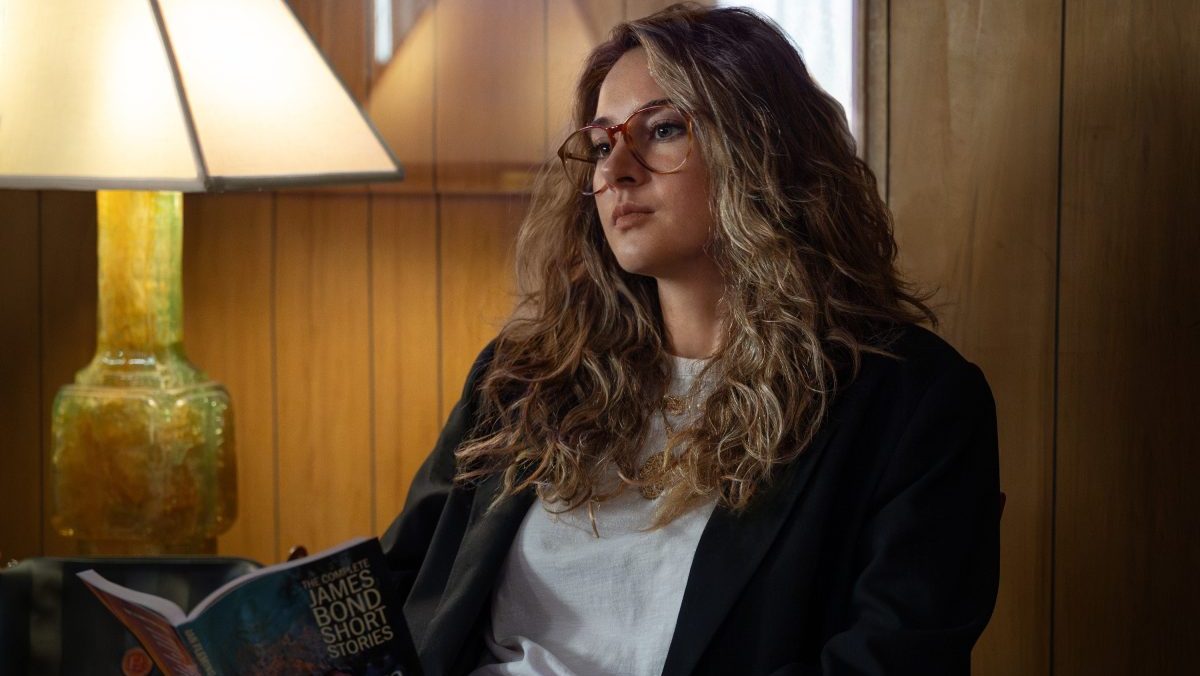Starz’s ‘Three Women’ is not trying to shock you
4.5 Starz

Gia (Shailene Woodley), the narrator and closest thing to a protagonist of the Starz series Three Women, notes early on that “we still don’t like it when a woman gets what she wants.”
Given that I watched the ten episode series needlessly on edge, waiting for the other shoe to drop when the wants of Gia and her subjects, the titular three women, strayed outside of societal norms, I would add that we fear it, too.
Don’t you find that serious dramas about women are almost always about murder? As if the stakes of being a woman aren’t high enough. But while there are consequences and plenty of conflict in Three Women, my fears did not come true.
The assumption that something bad will happen and instinct to judge is what this show seeks to challenge. Women who want more get punished. This is true of real life and fiction—which this fictional adaptation of Lisa Taddeo’s nonfiction book Three Women combines.
Taddeo (who Woodley’s character represents) interviewed hundreds of women across the country before settling on these three specific, real stories. What started as an exploration of sex in America became an exploration of desire. The series, which premieres September 13 on Starz, is an achingly empathetic and entertaining character study.
The first woman we meet is Lina, played by the acting tour de force that is Betty Gilpin. She is an Indiana housewife whose husband openly admits to being physically repulsed by her. Despite her situation, she talks about love and touch in an honest and beautiful way that Gia finds irresistible.
Whether she’s comparing her marriage to James Bond or telling Gia about a traumatic event from her childhood, she doesn’t act the way you’re “supposed” to. Lina also takes matters into her own hands. She reconnects with her high school sweetheart and starts a full-blown extramarital affair. You’re not “supposed” to do that, either. But you definitely don’t want her to be punished. The thing she’s guilty of wanting is so innocent, actually.
The next is Sloane, played by DeWanda Wise–who would be easy to describe as effortlessly cool if the show did not immediately deconstruct that very concept. She has a fractured relationship with her mother and issues with disordered eating, and that’s not even the crux of her story. One person’s after school special is another person’s subplot. We see that with the other women, too.
Sloane and her husband (Blair Underwood) live on Martha’s Vineyard in Massachusetts and are polyamorous. But complications arise when the oyster farmer Sloane wants to bring into her marriage doesn’t get her husband’s stamp of approval and has an unsuspecting partner. Is the potential messiness worth risking when the connection is that good? Maybe!
Then there’s Maggie, based on the real life Maggie Wilken from North Dakota, who was allegedly groomed by her high school English teacher in the ’00s. (Since Aaron Knopel, the teacher played by Jason Ralph, was acquitted and reinstated as a teacher, the show is legally obligated and careful to note that these are allegations and the show is portraying Maggie’s side of the story.)
Played by Gabrielle Creevy, Maggie has a sharp, sardonic sense of humor. She laps her favorite YA protagonists in terms of depth. She yearns to be seen as much as Lina and Sloane do, but her story starts six years after the alleged affair, when she decides to report Mr. Knopel. What she dares to want is for someone to believe her.
It’s very easy to identify the red flags when Maggie’s story flashes back, but it’s also very easy to step into her shoes, especially with all of the hyper-specific 2007–2009 pop culture references. You might cringe at “Lucky” by Jason Mraz and Colbie Caillat now, and it’s repulsive to see an adult man use it to seduce a minor, but imagine if someone you trusted told you that song was about you fifteen years ago, you would have been a goner.
As the season progresses, we weave in and out of each woman’s story. The premiere introduces the trio of women, Gia, and their respective desires. Episodes 2–4 focus on them one at a time. Then we learn more about Gia. Then all four again, or three, or two, diverging and converging until they all conclude together. The tension and arc of the season lies not only in what’s going to happen to these women but when and how their stories link up with Gia’s own journey.
That said, this where I find my one gripe with Three Women. The creative narrative structure keeps Gia and Maggie’s interactions at arm’s length. Lina and Sloane’s respective relationships with Gia grow throughout, but we don’t see Gia and Maggie together until the very end.
While I understand the desire to use that meeting as a plot point, I found myself wanting a little more of that dynamic. The show rushes to a conclusion after they finally meet. That leaves the impact that Maggie’s story has on Gia as something told rather than shown.
Thematically, Three Women does stick the landing. We’re better for having spent time with these women, and hopefully less likely to assume the worst when presented with desires that, in lesser hands, would be used to shock and punish.
Have a tip we should know? tips@themarysue.com